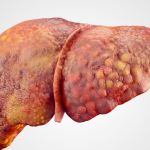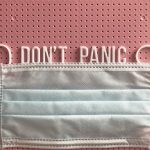Notes from the Field: February, 2020
Nature Cure Clinical Pearls
Jared L. Zeff, ND, VNMI, LAc
The following is not an article prepared for a medical journal. Not every statement of fact is cited or referenced. This is a commentary on the medicine, a running set of observations about practice in the field. It’s not meant to be a peer-reviewed presentation; rather, these are notes and thoughts from a practicing naturopathic physician, a primary care doc in general practice.
Philosophy Applied
In my last submission, I presented an outline of naturopathic philosophy: “How to think like a naturopath.” To do this, I referred to Lindlahr’s Nature Cure (1913) and my own observations and lessons learned from my primary mentor, Dr Harold Dick, of Spokane, WA. Dr Dick had been a student of Dr Otis George Carroll, who had been a student of Henry Lindlahr. I mentioned Lindlahr’s 3 causes of disease: lowered vitality, abnormal composition of blood and lymph, and the accumulation of morbid matter and poisons. And I outlined Lindlahr’s “Six Horses”:
- Establish normal surroundings and natural habits of life in accord with Nature’s Laws
- Economize vital force
- Build up the blood on a natural basis, that is, supply the blood with its natural constituents in the right proportions
- Correct mechanical lesions
- Promote the elimination of waste matter and poisons without in any way injuring the human body
- Arouse the individual in the highest possible degree to the consciousness of personal accountability and the necessity of intelligent personal effort and self-help
In the absence of any formal instruction in naturopathic philosophy during my own schooling, I discovered these principles as I observed my mentor, Dr Dick, healing people. I determined that he was applying his therapies in a specific order and that this order was key to a successful practice. I articulated this in an article titled “The Process of Healing: A Unifying Theory of Naturopathic Medicine,” which I published in 1997 in the Journal of Naturopathic Medicine.1
As I was teaching at Bastyr, Pamela Snider (the dean at Bastyr) and I reworked this concept and developed the “Therapeutic Order,” which we have taught and written about extensively since, along with Stephen Myers, MD, ND, of Australia. The key observation I made in practice was that the most efficient and effective outcomes occur when one applies these therapeutics in a specific order: First, identify and remove the causes, like inappropriate diet – ie, general hygienic measures. Next, stimulate the self-healing mechanisms with hydrotherapy and homeopathy – therapies that excite the Vis but do not add substance. Then determine which organs or systems are burdened or damaged, and correct them, usually with botanicals, drainage remedies, and specific nutrients. Finally, correct structure, ie, address “mechanical lesions.” As I observed my teacher doing this and began to do it myself, I suddenly realized an ordered and efficient application of the plethora of therapeutic methods and materials we use in naturopathic medicine. And I began seeing the same miracles of healing in my own work that I had witnessed in my teacher.
What this means in practice is that even the novice naturopathic physician should know how to treat a complex case that presents itself to her clinic. Let me give some examples.
Case Illustration: Crohn’s Disease
Let’s consider a case of Crohn’s disease. Generally considered incurable, Crohn’s is treated conventionally with oral corticosteroids and immune modulators (prednisone and mesalamine), occasionally biologics (infliximab, etc), and, sometimes, surgical resection of the bowel.
In February of 2018, a young man came to us with a diagnosis of Crohn’s disease, chronic body and joint pain, migraine headaches, and depression. He was tired and anemic, was on several medications, and had at least 20 bloody stools each day. His blood pressure was 98/52 mm Hg. We ran a CBC, which showed the following: RBC: 3.49 (4.5-6.0); Hgb: 5.2 g/dL (13.5-17.5); Hct: 21.5% (41.0-53.0); MCV: 61.6 (80-100), serum iron: 6 µg/dL (50-160); and percent iron saturation: 2% (13-50). The problem began at age 13; he was now 20. He’d had multiple transfusions. He could not go to school or work due to the constant diarrhea and fatigue.
I began his case with a dose of Phosphorus 200C in the office – which immediately perked him up and eased his abdominal pain – as well as daily hydrotherapy in the office. I prescribed Robert’s Formula (containing equal parts of Echinacea, Hydrastis, Althaea, Phytolacca, Geranium, and Gentiana), 45 drops 4 times daily before meals and before bed; the cell salt Ferrum Phos 6X, 5 tablets 3 times daily; and a nightly dose of Phosphorus 1LM. I also did a dietary evaluation to determine the existence of any food intolerances. Results revealed a primary problem with egg and gluten. He had been off gluten for 10 years.
One week later, he was a bit better. He reported that the rectal bleeding had reduced by 50% and that he still had diarrhea, but hadn’t had any more bleeding for the past 3 days. He was down to 15 bowel movements daily. His appetite had improved.
One week after that, he reported his bowel movements had reduced to 7 per day, and without blood. Since starting the hydrotherapy, he’d had no migraines, except on the days he didn’t do hydrotherapy.
Two weeks later he reported increased energy and fewer bowel movements, and he was sleeping less. Then he called a few days later and reported that the bloody diarrhea had returned. He had made a dietary error. I told him to eat nothing but homemade soup for 5 days. I started him on Rumex tincture, 60 drops 3 times daily. We had been doing weekly CBCs and were seeing a slow improvement in his red count and indices.
By early April, his Hgb was 6.2 g/dL. His iron had increased to 10 µg/dL. By June 11, his Hgb was 7.8. On June 19, it was 8.5; on June 26, it was 9.0; and on July 2, 10.1. This progress continued. By August, his RBC count was 5.3, Hgb was 11.6, Hct was 40.8, and MCV was 75. His energy was substantially improved. He was having occasional increases in diarrhea or bloody stool, but, overall, these were less and less frequent.
By September, he reported feeling “fine-ish” for the first time. He was eating 2 meals daily. Although he was having 2-3 loose bowel movements each day, he had no bleeding. He had no abdominal pain, and no other body or joint pain. His Crohn’s disease seemed to be in remission. We stopped the hydrotherapy, which he had already been reducing in frequency.
In December, he ate poorly and has a slight reversal; however, he reported continual improvement overall. He started school for the spring term and got a job. By April 2019, he reported feeling “normal.” He was working and taking 2 classes. He had continued the Robert’s Formula, stating that he just felt better when he took it; however, he had stopped all of the other medications. His diet had expanded. Any amount of egg would cause abdominal pain, though might not affect his stools. I prescribed Amber grisea 30C at bedtime, which stopped the pain.
In May, some bleeding reoccurred, and his bowel movements increased to 4-5 per day. There was a little abdominal pain, and the Amber grisea no longer helped. I made him a formula of Geranium, Cinnamomum, Quercus, Capsella, and Ceanothus, 90 drops 4 times daily until the bleeding stopped, which happened within 4 days. His stools were now back to 2-3 per day.
I see him now every 2-3 months. He is mostly normal, with occasional episodes of diarrhea, rarely with blood. He is continuing with school, a full load this year, And he’s kept at his job. He continues to take Robert’s Formula, though not daily. The last time he had a minor flare, it was eased with Colocynthis 6C. He has gained weight, describes his energy as normal, his CBC is normal, he works out in a gym, and he describes himself as happy again.
Review of Philosophy
Let’s simplify this case. What was done? In this case, an acute remedy was given based upon the patient’s acute presentation of bloody diarrhea, his extremely thin frame, pain pattern, and mental state. I chose Phosphorus 200C, which led to an immediate improvement in pain. He was treated with a specific dietary recommendation, daily hydrotherapy, a botanical to improve gut health (Robert’s Formula), an iron salt to improve the anemia, and a nightly homeopathic dose of Phosphorus 6C. We added a hematinic with Rumex. His Crohn’s slowly improved, and it took about 8-10 months to restore his blood indices to normal.
We applied the Therapeutic Order:
- We addressed the acute problem: pain and bleeding
- We evaluated and discovered a dietary stressor (egg), which was removed from the diet. Theoretically, the egg disturbed his digestion and increased inflammation in the gut.
- We instituted daily hydrotherapy to stimulate the vital force, improve blood flow in the gut, enhance the emunctories, and moderate the immune system
- We provided a homeopathic medicine to stimulate the vital force
- We provided 2 botanical mixtures to enhance damaged or weakened systems: the gut and blood cell production
- We followed the case closely and made occasional modifications when indicated
In carrying out the above, we also considered Lindlahr’s 3 causes of disease:
- Lowered vitality: We attended to this by addressing the anemia and the pain
- Abnormal composition of blood and lymph: We addressed this through enhanced digestion, doing all of the above
- Accumulation of morbid matter and toxins: We addressed the toxemia of poor digestion through the elimination of egg, as well as the hydrotherapy, which improves digestion and reduces toxemia
Another Example
Let us consider another case of Crohn’s disease – a 46-year-old woman who presented last August with Crohn’s, diabetes, fibromyalgia, depression, anxiety, and joint and back pain. She reported being sick all the time, and being “out of energy.” This was another difficult case. The Crohn’s was diagnosed in 2007. She “bled out” from bloody diarrhea in 2009, and almost died. She had abdominal pain, diarrhea, gas, and bloating. The fibromyalgia was so bad on some days that she would just lie in bed and cry. She had suffered depression on and off since high school. She was not happy. She’d had anxiety since the bleeding episode. She would take omeprazole for heartburn. I measured her HgbA1c at greater than 14% in my office; this was after her blood sugar was measured at 399 mg/dL.
Here are her chief complaints as she listed them: Anxiety; Bipolar; Fatty liver; Crohn’s disease; Hypertension; Hypothyroid; Sleep apnea; Chronic fatigue; Fibromyalgia; Chronic back pain; Nerve pain in leg; Depression; Bursitis; Elevated cholesterol; Obesity; Diabetes; Memory problems.
When she came to me, she was on about 25 medications: aripiprazole, balsalazide, carvedilol, cholecalciferol, eszopiclone, exenatide, medroxyprogesterone, melatonin, metformin, mupirocin, omeprazole, odansetron, penciclovir, pramipexole, insulin, triamcinolone, simethicone, fluticasone, guaifenesin, hydroxyzine, ipratropium-albuterol, lamotrigine, loperamide, levothyroxine, lisinopril, and pregabalin.
This is a complicated case, but the approach is the same. To begin with, I am not addressing all of her problems. I am not exactly addressing any of her problems per se. First, get the diet right. In my case, this means determining whether there is a dietary element that is not well digested. (I use old Dr Carroll’s method for this.) Make sure the diet contains an appropriate nutrient base, and make recommendations if needed. Institute constitutional hydrotherapy to stimulate the vital force and do all the things it does. Provide an appropriate homeopathic medicine based on the patient’s picture. Provide botanical support for digestion. Stimulate or support the emunctories if needed. I usually use low-potency homeopathic drainage remedies for this. Support systems that are weakened or damaged, with botanicals or nutrient-substances as indicated.
In this case, we determined that the patient had an egg intolerance. This is not specific to Crohn’s; it’s just a coincidence that the previous patient had a similar food intolerance. We began daily hydrotherapy treatments, though in her case she did these at home – just the towels, no sine wave. I gave her a Gentiana/Scutellaria bitter tonic to aid stomach function. I gave her a set of homeopathic drainage medicines to take daily for a month. I started her on adrenal cortex, 300 mg each morning, to support adrenal function. I instructed her to continue all of her prescribed medications. She was to call me if she felt any worse or felt that any of my medicines were bothering her.
I saw her 1 month later. She had made the dietary changes, per my recommendations. This was hard because she loved eggs and ate a lot of them. She reported that her vomiting and diarrhea and abdominal cramping had all stopped. The fibromyalgia was much improved; she had no more days of intense pain, and hardly any pain at all. Her energy had improved; she could work in the yard and do house work again. There was still some back pain, but not like it was. The heartburn was not as bad. The anxiety was much improved; she only needed 1 anxiety pill daily instead of 3.
I gave her Carbo veg 6C to take after meals. I recommended an extremely low-carbohydrate diet to reduce the blood glucose, and told her to keep a close eye on her blood sugar to determine insulin needs. I gave her a product to help manage blood sugar. I had her continue the adrenal cortex and hydrotherapy. I recommended she stop the balsalazide, omeprazole, odansetron, fluticasone, and loperamide, as these were no longer needed. (In general, I tell people to continue on whatever medications or supplements they have been taking, so we can see what differences our interventions make. The exception to that is when I believe that a medication is a primary cause of a problem and can thus be eliminated. We review medications as we continue, and seek to reduce them as we can, with the goal of eliminating them all, if possible.)
I saw her 1 month later. She reported that the Crohn’s was no longer a problem. Her blood sugar was reduced. Her energy had improved. She has lost about 10 pounds. Her back pain and leg pain had further reduced. She said, “I am no longer sick all the time.” She was 90 % improved.
Four months later, she was told that her Crohn’s disease was in remission. All of her symptoms had improved. She was no longer depressed or anxious. Her blood sugar was slowly reducing with the help of the supplement and the low-carbohydrate diet.
I am continuing to see her monthly. Last month, her A1c measured 10.7. Most of her complaints are no longer present, and she has been taken off of most of her medications. She still takes insulin and metformin. There is still more work to do with her.
Closing Comments
I used these cases to illustrate principles of treatment. I want to note that Crohn’s can be a very difficult problem. I have had cases that did not respond, or did not respond well. This second case responded much more rapidly than I expected. I expect all my patients to improve, but I am only a simple country doctor, and not all people get better.
I apply this model, in general, to every case I see. If one understands Lindlahr’s model, reflected in my case through the work of O.G. Carroll and Harold Dick, then one basically knows how to treat almost any patient who comes through the door. The focus is not principally on the disease or diseases; it is on the patient. It is directed by a philosophy of healing in which the focus is on restoring health, not treating disease. And health is always restored the same way, as Lindlahr directed us.
Respectfully,
Jared L. Zeff, ND, LAc, VNMI
Reference:
- Zeff J. The process of healing: a unifying theory of naturopathic medicine. J Naturopath Med. 1997;1:122-126.

Jared L. Zeff, ND, VNMI, LAc, is a licensed doctor of naturopathic medicine and a licensed acupuncturist. In addition to functioning as Medical Director at the Salmon Creek Naturopathic Clinic in Vancouver, WA, Dr Zeff teaches on the faculty at National University of Natural Medicine in Portland, OR, where he was also Dean from 1988 to 1993, and holds a professorship in Naturopathic Medicine. Dr Zeff is a graduate of the University of California, NCNM, and the Emperor’s College of Traditional Oriental Medicine. He, along with Pamela Snider, is the author of the AANP’s Definition of Naturopathic Medicine, and the Therapeutic Order concept.









